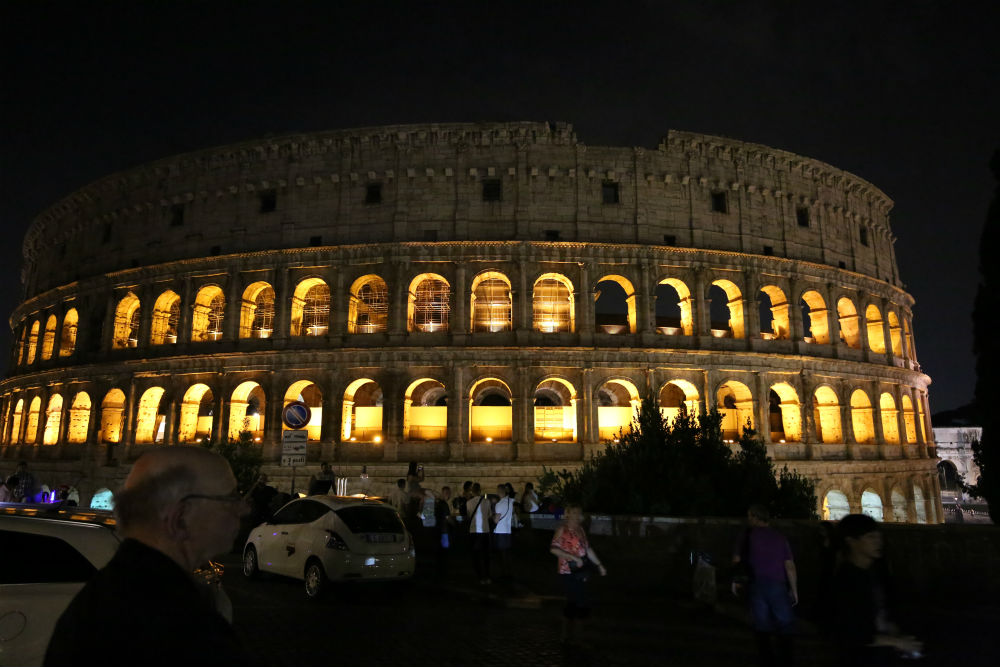ROME is a great place to visit for short city breaks to long days sitting at a cafe watching the world go by. It carries the weight of nearly three thousand years of history very lightly with many parts often forgotten.
And, unlike many cities Rome is enjoyed best if you take it at a slower pace to absorb the atmosphere, culture and history.
Exploring the city on foot allows you to stroll through thousands of years of history that has been adapted, changed or remained the same over the course of its existence.

From classical ruins to early Christian places of worship often standing next to and sometimes beneath Baroque fountains or Renaissance Palazzos, taking you back to the time that was once the glory of Rome.
And, spending a week in the city (we went Edinburgh – Ciampino direct with Ryanair) allows you to enjoy the vibrancy, culture and history of Rome.
While, TV shows located in Rome, guidebooks and YouTube videos display the stunning city, there’s no substitute for experience at first hand – and close up – the view from the Palatine Hills overlooking what would have been the ancient city.
The best way to enjoy the historical locations, ruins and buildings in Rome is to have guided tours of these areas providing more context to the areas we think we know so much about but really don’t and there are plenty of companies to choose from.
After research, we went with Civitatis, who offer day trips and guided tours in the most visited tourist destinations.
The company offers a great range of tours that offered value for money and were priced well using local guides with a great depth of local knowledge and historic insight.
The tours we did with the company were the: Trastevere Food Tour, the Rome combo, the Appian Way and catacombs, Villa Borghese Gallery guided tour and the Rome night tour.
Each tour had a different guide, due to their individual expertise of the subject and area of Rome you visited.
They have a specific time and meeting place you had to be there at, which comes with the email confirmation and voucher.
A great tour that is ideal to do at the start of the week is the night tour of Rome they offer, which shows you the most iconic talking points at night, whilst telling you about other areas and places to visit while in Rome.
The Trastevere food tour takes you around the more bohemian part of Rome and is one of the best places to go to eat authentic Roman cuisine.
The guide slowly walks you through the history of Trastevere and its food, while trying local delicacies from the Trapizioni to the Suppli — two forms of Roman street food.
And being advised about the best places to eat and what to look for when looking for the authentic Roman restaurant.
The Rome Combo is a great way to see the Vatican museums, Sistine Chapel, St Peter’s Basilica, the Colosseum, the Roman Forum and Palatine Hills in one day.
The Vatican State in the morning and ancient Rome in the afternoon. It’s a great tour, if you are trying to squeeze everything in one day.
Civitatis do offer similar tours that allow you to see these iconic structures over several days, if you fancy spending more time and enjoying Rome at a leisurely pace. Except from that it is a well informed and fun tour to do.
The artwork in the Villa Borghese holds some of Rome’s most important pieces from Bernini to Rafael’s girl with the unicorn.
Civitatis offer a great tour that explains the history of the Villa and how Cardinal Borghese acquired these iconic pieces with an explanation of the story of each work.
For a great day out of the city centre and to get an idea of the striking Roman countryside it is well worth seeing the Appian Way. They offered a great tour that shows and explains the history of it while seeing other sites within the area.
However, we did the tour on a Sunday, which meant the Catacombs of Saint Sebastien were closed, so we ended up seeing the Catacombs of Saint Callixtus, which is where six Popes were buried from the second to fifth century.
These catacombs are in Vatican State territory and are over 37 kilometres because of its importance and the fact, it is a labyrinth you have to be shown by one of their trained guides.
Some days you may find yourself stumbling the city looking for food or a place to have a drink.
A typical non-tourist meal would cost around 30 euros for two people but if you ate in a touristy area you can see yourself paying 50 Euros for two people to over 100 depending on where you are.
One of the best places to go for a coffee is Sant’ Eustachio Il Café, a small shop by the Pantheon that sell its own ground coffee beans from Brazil.
There is also a nice gelato shop within the area of the Pantheon just right of a shop that sells sandwiches. The gelato is perfect and what you would expect light, fluffy and tasty.
There are a nice variety of places to eat around Piazza della Repubblica, Ciampo di Fiori, Spanish Steps and the Vatican but be warned the prices may be very expensive if they are aimed at tourists.
And if I can offer one final piece of advice – particularly for anyone looking to buy plastic water bottles to keep hydrated to deal with the heat.
Bring or buy a plastic bottle and constantly re-use it by refilling it up with the water from the Nasone that is located all all over the city providing free fresh water brought down from the mountains to Rome by the aqueducts.